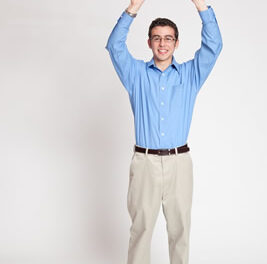It’s sometimes curious to observe the marketing of great artists. On October 26, Arcadi Volodos gave a recital on the NC Symphony’s Great Artists Series that left many attendees wondering what all the fuss was about. Volodos has made some big splashes as a concert and recording artist and has a reasonably well-known name, but he seemed off-form (at best) or in a funk (at worst) in Raleigh.
Forty-eight hours later, in UNC’s Hill Hall, there was a recital that had all the hallmarks of true greatness. It was presented by Boston-based mezzo-soprano Cynthia Sanner, whose voice is the genuine article – it is rich, warm, radiantly colored, even throughout its range, and used with keen intelligence and insight. Her partner was pianist Mac McClure, whose roots here run deep (for details, see our current feature) but who has spent much of his adult life in Spain, where he has become a leading exponent of Spanish music. He began the all-Spanish program, which centered on songs and dances, with some extraordinary performances of rare and rarely-heard music – three Songs and Dances by Surinach, three more by Mompou, and a stunning reading of Granados’ “Los Requiebros,” from “Goyescas.” Even in Hill Hall (where, from a seat close to the stage, the sound seemed better than usual), McClure instantly demonstrated that he is a great artist, one who deserves to appear on series bearing that appellation. His playing was without technical blemish, which isn’t always the case, even among the nominal “greats,” and his musicianship was, throughout, overwhelming. There were no extremes of dynamics (soft or loud, with not much in between) that mar too many of our piano-factory products nowadays. Instead, McClure provided a wide range of sound and an almost infinite variety of color. Toss in all that experience in Spain (with Alicia de Larrocha, among others) and the results were consistently awesome.
The second half brought Sanner to the fore, but her portion was no mere recital of numbers with some tinkly piano. The vocal portion stood as a history of great Spanish art music, although its component parts weren’t presented in chronological order. First up were two songs of Rodrigo, followed by a pair by Falla, from the seven Popular Spanish Songs (a violin version of which was recently played here by Leila Josefowicz). Two parts of Granados’ “La maja dolorosa,” in which the partnership of the two artists was particularly gripping, were followed by the American premieres of “Danse” and “Alelí” by Montsalvatge (b.1912). In a note sent before the program, the pianist–who is engaged in a recording project that will eventually encompass 15 CDs of music by this composer–revealed that these are “nice songs but a long way from the ‘Canciones Negras,’ which were written nearly 60 years ago.” That’s a fair assessment, for they are light and in a sense inconsequential pieces, probably tossed off on a warm afternoon. That said, however, the performances were object lessons in style and commitment, and the results made the music seem of paramount importance, so the composer was exceptionally well served. The formal program ended with those aforementioned “Canciones Negras,” of which only the penultimate number, “Canción de cuna para dormir a un Negrito,” is particularly well known on our side of the Great Pond. These five numbers, too, were ravishingly well done, and the resulting ovation, from a ridiculously small audience, prompted the performance of Carlos Guastavino’s “La Rosa y el Sauce,” which sent the artists’ grateful public away quietly into the night.
The program included texts and translations, as all such programs should but far too many do not. The recital was a gift to the pianist’s alma mater. It’s a shame that so few people turned out to hear it. What’s in a name? It’s art that matters, and Sanner and McClure have that in abundance.











